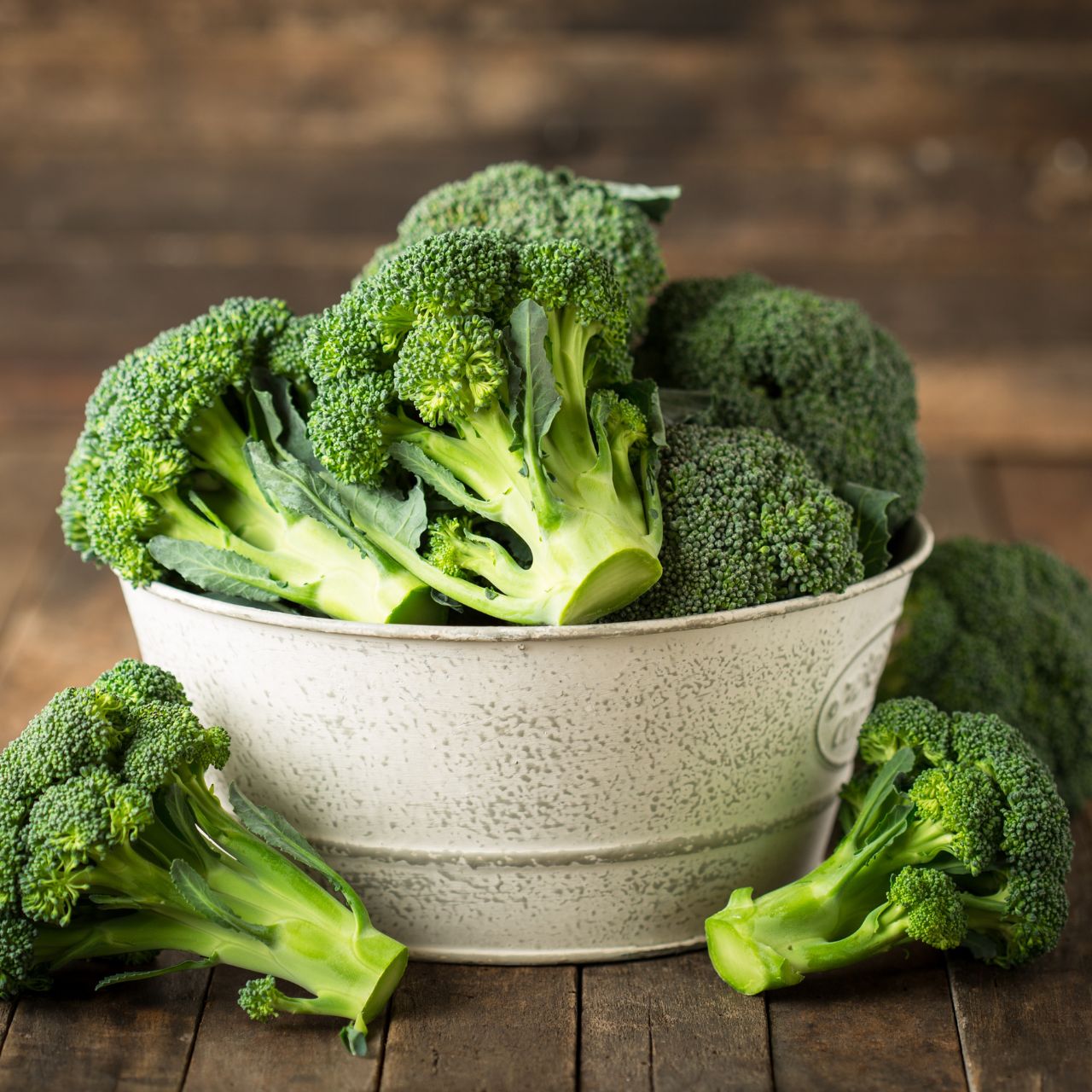Sulforaphane - power substances from cruciferous plants
Sulforaphane - the reason broccoli is so healthy. The current research situation delivers astonishing results.
Sulforaphane - the reason broccoli is so healthy. The current research situation delivers astonishing results.


B.A. Sporttherapie und Prävention
Even in childhood we learn – Broccoli, radish, and cauliflower are healthy! But what makes cruciferous vegetables the power vegetable they are always touted to be? The magic word is sulforaphane. As a precursor to glucoraphane, sulforaphane is the active form. Glucoraphane, in turn, belongs to the mustard glycosides, which are found in vegetables such as nasturtium, horseradish or the well-known cultivated cabbages such as Brussels sprouts, cauliflower, broccoli and of course mustard. They give these vegetables their slightly spicy mustard taste.
Sulforaphane has become more and more of a scientific interest, especially in recent years. The reason for this is the influence of mustard oil on oxidative processes.(1) Oxidative processes refer to processes in which free radicals are released. Since these are extremely reactive, an increased occurrence can lead to them occupying the reaction partners of other molecules and thus bringing our cells into an unfavorable balance.
Sulforaphane has an indirect positive effect here by activating enzymes in the liver, which in turn can neutralize free radicals. In this context, a recent in-vivo study concludes that sulforaphane has great potential for activating antioxidant enzymes in the upper airways. (2)
More and more studies are currently investigating the influence of sulforaphane on the controlled proliferation of cells with extremely interesting results. (3,4,6)
Another advantage of sulforaphane is that even with regular intake, no resistance develops. In their article “Uncomplicated urinary tract infections” Vahlensieck and Scheffer, for example, describe sulforaphane as an interesting alternative for the care of the urinary tract.
Sulforaphane can be easily absorbed by eating various types of cabbage or radishes. The problem: if the heat is too high, sulforaphane is largely destroyed. It is therefore advisable to steam the vegetables at low temperatures. If you decide to cook broccoli, it makes sense to use the cooking water for a soup, for example. When heated, the ingredients are swept into the cooking water and remain in it.
Another good option is broccoli seeds or broccoli sprouts, as they contain a higher amount of sulforaphane than the broccoli head.
It is also important to note how good your own individual requirements are for absorbing sulforaphane. Bioavailability can be reduced in the case of inflammatory bowel diseases, antibiotic or chemotherapy (6). Here it is advisable to eat the vegetables raw and chew them carefully.
Sources:
1 Arana-Hidalgo Dana, Silva-Palacios Alejandro, Role of sulforaphane in endoplasmic reticulum homeostasis through regulation of the antioxidant response, Life Sciences, Volume 299, 2022,120554, ;ISSN 0024-3205, https://doi.org/10.1016/j.lfs.2022.120554.(https ://www.sciencedirect.com/science/article/pii/S0024320522002545)
2 Riedl MA, Saxon A, Diaz-Sanchez D. Oral sulforaphane increases Phase II antioxidant enzymes in the human upper airway. Clin Immunol. 2009 Mar;130(3):244-51. doi: 10.1016/j.clim.2008.10.007. Epub 2008 Nov 22. PMID: 19028145; PMCID: PMC2668525.
3 Li Y, Zhang T, Korkaya H, Liu S, Lee HF, Newman B, Yu Y, Clouthier SG, Schwartz SJ, Wicha MS, Sun D. Sulforaphane, a dietary component of broccoli/ Broccoli sprouts, inhibits breast cancer stem cells. Clin Cancer Res. 2010 May 1;16(9):2580-90. doi: 10.1158/1078-0432.CCR-09-2937. Epub 2010 Apr 13. PMID: 20388854; PMCID: PMC2862133.
4 Suppipat K, Park CS, Shen Y, Zhu X, Lacorazza HD. Sulforaphane induces cell cycle arrest and apoptosis in acute lymphoblastic leukemia cells. PLoS One. 2012;7(12):e51251. doi: 10.1371/journal.pone.0051251. Epub 2012 Dec 12. PMID: 23251470; PMCID: PMC3521002.
5 Vahlensieck, W., Scheffer, K. Uncomplicated urinary tract infections. Urologist 60, 52-58 (2021). https://doi.org/10.1007/s00120-020-01289-4
6 Prof. Dr. re. of course Ingrid Mr. Cruciferous vegetables in cancer therapy. Current Health News, Issue 8, 2013
Related products
Content: 0.143 Kilogramm (€314.69* / 1 Kilogramm)
Content: 0.039 Kilogramm (€923.08* / 1 Kilogramm)